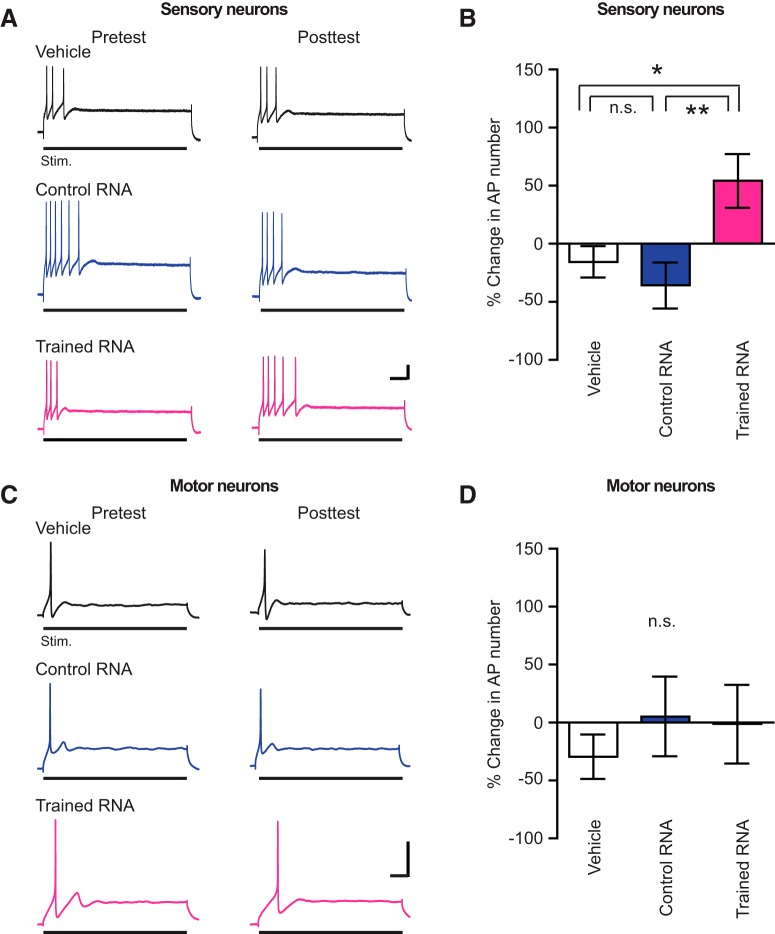Figure 3.
Treatment with RNA from trained animals increases excitability in dissociated sensory neurons but not in dissociated motor neurons. A, Sample electrophysiological traces from excitability tests on sensory neurons. Scale bars: 20 mV, 0.25 s. B, Changes in the excitability of the sensory neurons induced by RNA/vehicle treatment. The mean change in evoked APs in each group was: vehicle = –17.29 ± 12.86% (n = 19); control RNA = –35.76 ± 19.88% (n = 16); and trained RNA = 56.66 ± 22.07% (n = 19). The group differences were significant (Kruskal–Wallis; H = 11.81, p < 0.04). Dunn’s post hoc tests indicated that the increased firing in the trained RNA group was greater than that in the vehicle group (q = 2.44, p < 0.05) and control RNA group (q = 3.25, p < 0.004), respectively. The difference between vehicle and control RNA groups was not significant (p > 0.9). C, Sample traces from tests of motor neuron excitability. Scale bars: 25 mV, 0.25 s. D, Summary of posttreatment changes in the excitability of motor neurons. The mean changes were: vehicle group = –29.28 ± 19.16% (n = 15); control RNA group = 5.278 ± 34.36% (n = 12); and trained RNA group = –1.136 ± 34.01% (n = 14). The group differences in excitability were insignificant (p > 0.7).

